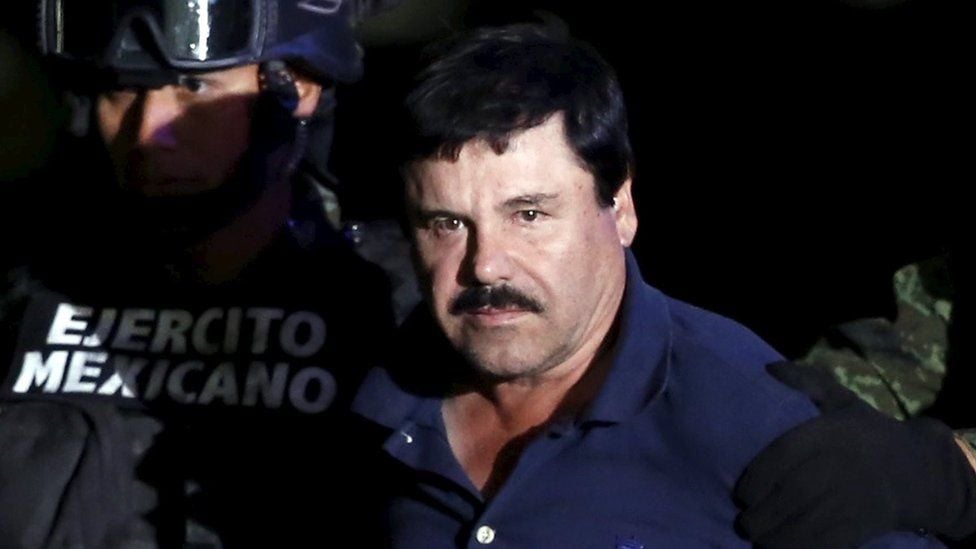More than a thousand people marched in support of captured Mexican drug lord Joaquin El Chapo Guzman in his home state’s capital on Wednesday, demanding his release. But did you know many people were against El Chapo’s arrest?
During the penultimate capture of drug lord El Chapo in 2014, over a thousand people marched in Culiacan, Mexico, demanding his release. The crowd also demanded that the boss not be extradited because he had kept the city free of extortion and kidnapping.
Support for El Chapo
Police detained about 100 people in northern Mexico on Sunday in an unsuccessful attempt to halt the second demonstration in less than a week to show support for captured drug lord Joaquin El Chapo Guzman.
A march calling for Guzman’s release drew about 1,000 people to the streets of Culiacan, the capital of northern Sinaloa state and the home base of the Sinaloa Cartel, which Guzman allegedly leads.
A crowd of about 150 people gathered at a shrine to Jesus Malverde, a folk saint regarded as the patron or protector of drug dealers. (Source: CBC News Canada)
Why Did the Masses Want to Free El Chapo?
Messages on social media urged people to gather at the shrine for a march in support of Guzman, who is alleged to be the most powerful drug lord in the hemisphere and who some residents say provided jobs, money, and security for residents.
A total of 20 police patrol vehicles were dispatched to the scene, but many of the demonstrators refused to comply with police orders to disperse. According to Daniel Gaxiola, spokesman for the Sinaloa state public safety department, 40 people were detained for disturbing the peace at the time.
Later, hundreds of people evaded the heavy police presence by marching in groups toward downtown, while dozens were detained along the way.
By late Sunday, Culiacan judge Gabriel Pena Gonzalez said more than 100 people had been arrested on disturbing the peace and other charges.
Some of the marchers were from Guzman’s hometown of Badiriguato. The municipality is located in the mountains near Culiacan. Some claimed to have been promised 700 pesos (about $53) for attending the protest, and at the end of the march, some women and men were seen writing down participants’ names in notebooks. (Source: CBC News Canada)
El Chapo’s Love of Country
As the disorganized march neared Culiacan’s center, shots rang out, and protesters scattered. It was unclear who fired the shots, but Francisco Cuamea, the editor of Culiacan’s Noroeste newspaper, said two of the paper’s photographers were roughed up by police when they attempted to photograph shell casings left behind.
In Wednesday’s march, norteno musicians played trumpets while high school students in uniforms held up signs reading We want Chapo Free and We love Chapo.
After that march, authorities said they would not seek to limit freedom of expression but would not tolerate marches that disturbed the peace or provided support or justification for criminals.
Guzman was apprehended on February 22 in Mazatlan, a Pacific Coast city. Mexican federal judges have ruled that he must stand trial in Mexico on separate drug trafficking and organized crime charges. According to the Attorney General’s Office, he is also charged with organized crime in six other cases in four Mexican states and Mexico City.
Guzman, who escaped from a prison in western Mexico in 2001, will be held in Mexico’s maximum-security prison. The government has stated that he will not be extradited to the United States, where Guzman has been charged in California, New York, and other states. (Source: CBC News Canada)
